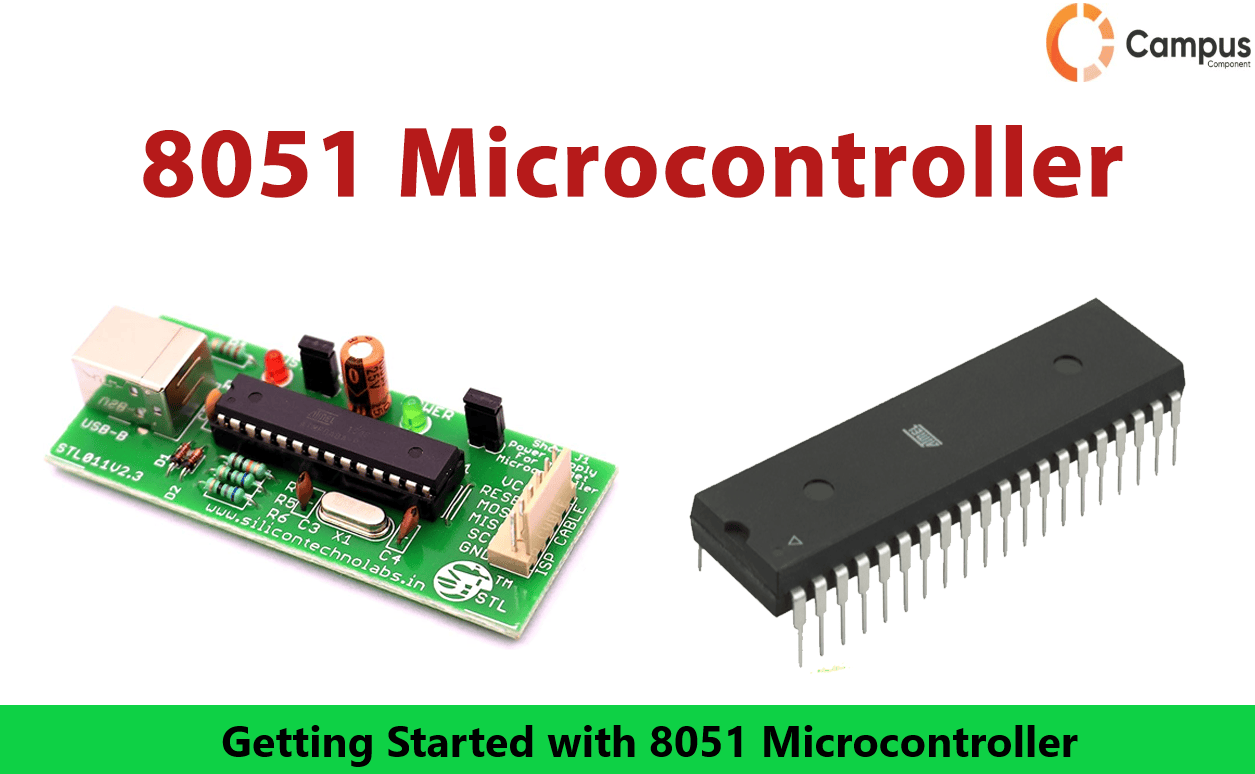
The 8051 microcontroller, also known as MCS-51, is one of the earliest and most used microcontrollers. Intel launched 8051 in 1981. Initially, it was based on N-type metal-oxide-semiconductor (NMOS) technology, but later it was developed using complementary metal-oxide-semiconductor (CMOS) technology. These newer versions were known as 80C51, with the "C" known for CMOS technology. The 8051 is an 8-bit microcontroller, i.e. its data bus is 8 bits wide, allowing it to process 8 bits of data simultaneously. It finds applications in multiple embedded systems, including robotics, remote controls, the automobile industry, telecom applications, and power tools.
In this blog, we will guide you to get started with making embedded systems projects using 8051 microcontrollers , also we will discuss its architecture, and how to get started with 8051 microcontroller programming and applications.
The 8051 Microcontroller Features:
8-bit CPU
4 KB ROM
128 bytes RAM
32 I/O pins
Two 16-bit timers
Full duplex UART for serial communication
Understanding 8051 Microcontroller Architecture
Block Diagram of 8051 Microcontroller
Central Processing Unit (CPU): The CPU of the 8051 microcontroller performs arithmetic and logic operations. It fetches instructions from the ROM, decodes them, and executes them sequentially.
Memory Organization: The 8051 microcontroller has a Harvard architecture, meaning it has separate memory spaces for program code (ROM) and data (RAM). This separation enhances the speed and efficiency of data handling.
I/O Ports: The 8051 has four parallel I/O ports (P0, P1, P2, P3) each of 8-bits, which can be configured as input or output.
Timers/Counters: Two 16-bit timers/counters are available (Timer 0 and Timer 1). These can be used for timing operations and counting external events.
Serial Communication: The microcontroller supports serial communication via a UART interface, allowing it to communicate with other serial devices.
Interrupt System: The 8051 has five interrupt sources, including two external interrupts, two timer interrupts, and one serial port interrupt, enabling the microcontroller to respond to external events promptly.
The image describes the Pin configuration of 8051:
8051 Microcontroller Packaging Types:
The 8051 Microcontroller is offered in various IC packaging formats. The most widely used and popular packaging is the Dual In-line Package (DIP), typically available as a 40-pin PDIP ( Plastic DIP) IC. Another common packaging type is the 44-lead PLCC (Plastic Leaded Chip Carrier), which is a surface mount package. Additionally, the 8051 microcontroller is also available in a 44-lead TQFP (Thin Quad Flat Package), another surface mount option.
Getting Started with 8051 Microcontroller:
Tools and Software:
To start programming the 8051, you will need:
8051 Development Board: A hardware board with an 8051 microcontroller and necessary peripherals.
Keil µVision IDE: A popular Integrated Development Environment (IDE) for programming the 8051.
Programmer/Debugger: A tool to load the compiled code onto the microcontroller.
Setting Up Your Development Environment
Install Keil µVision IDE: Download and install the Keil µVision IDE from the official website.
Set Up the Hardware: Connect your 8051 development board to your computer via the programmer/debugger.
Write Your First Program: Open Keil µVision, create a new project, and write a simple LED blinking pgram in C.
Compiling and Loading the Program
Compile the Code: Use Keil µVision to compile the code. It will generate a hex file.
Load the Program: Use the programmer/debugger to load the hex file onto the 8051 microcontroller.
Run the Program: Once loaded, the microcontroller will start executing the code, and you should see the LED blink.
Compile the Code: Use Keil µVision to compile the code. It will generate a hex file.
Load the Program: Use the programmer/debugger to load the hex file onto the 8051 microcontroller.
Run the Program: Once loaded, the microcontroller will start executing the code, and you should see the LED blink.
Applications of 8051 Microcontroller
Automated Systems: Traffic light control, industrial automation, robotics
Consumer Electronics: Remote controls, washing machines.
Communication Systems: Embedded communication protocols.
Automated Systems: Traffic light control, industrial automation, robotics
Consumer Electronics: Remote controls, washing machines.
Communication Systems: Embedded communication protocols.
Conclusion:
Thus we have understood the basics about working of 8051 microcontrollers. With its simple architecture and vast resources available, the 8051 provides an excellent platform for beginners embedded developers to learn and develop their skills. By following the above guide, you can start creating your own embedded projects and explore the endless possibilities offered by 8051 microcontroller technology.
If you are looking for Microcontrollers like 8051 then Campus Component is your one stop solution. Explore different Microntrollers at our Store TODAY!
